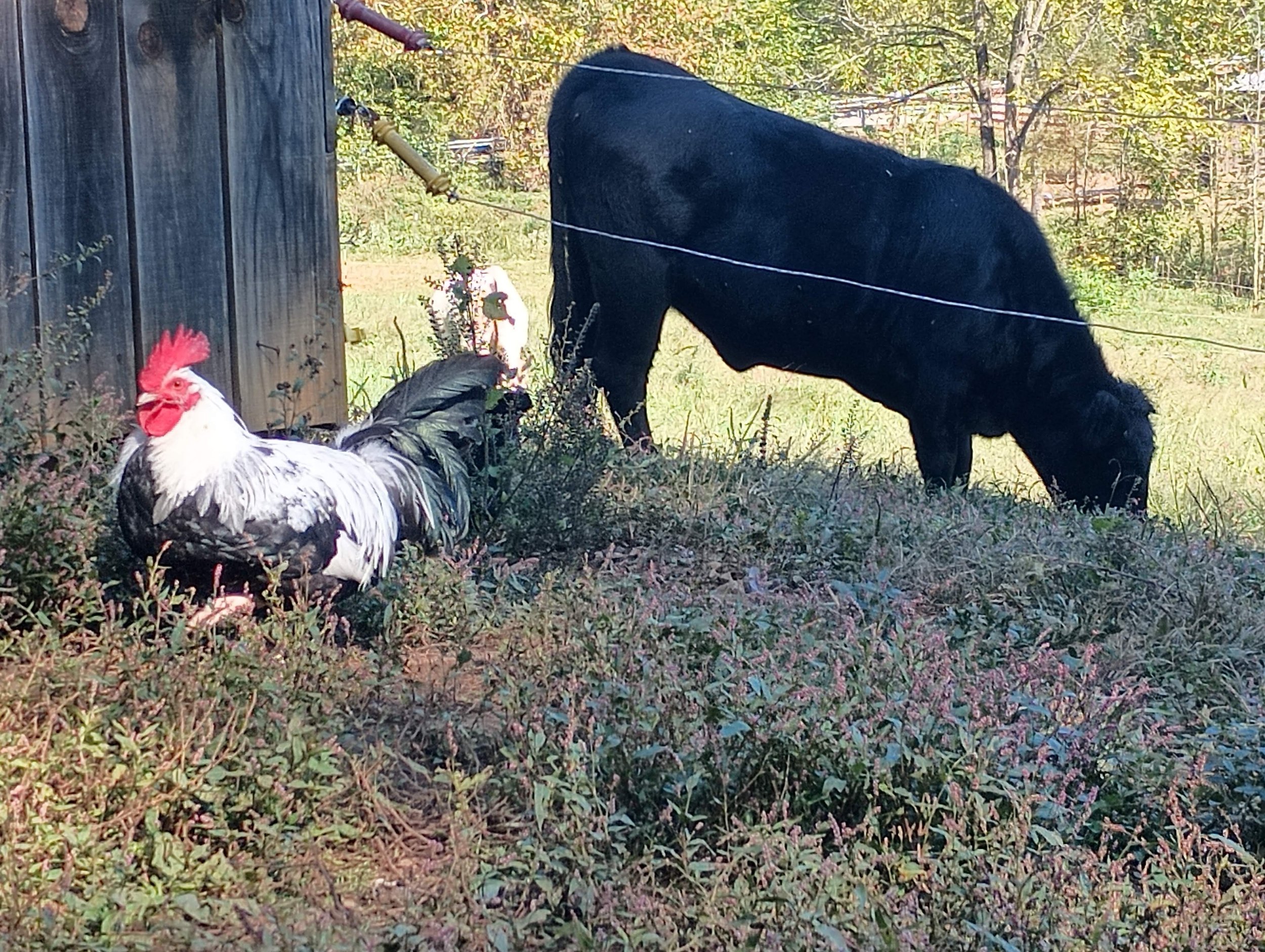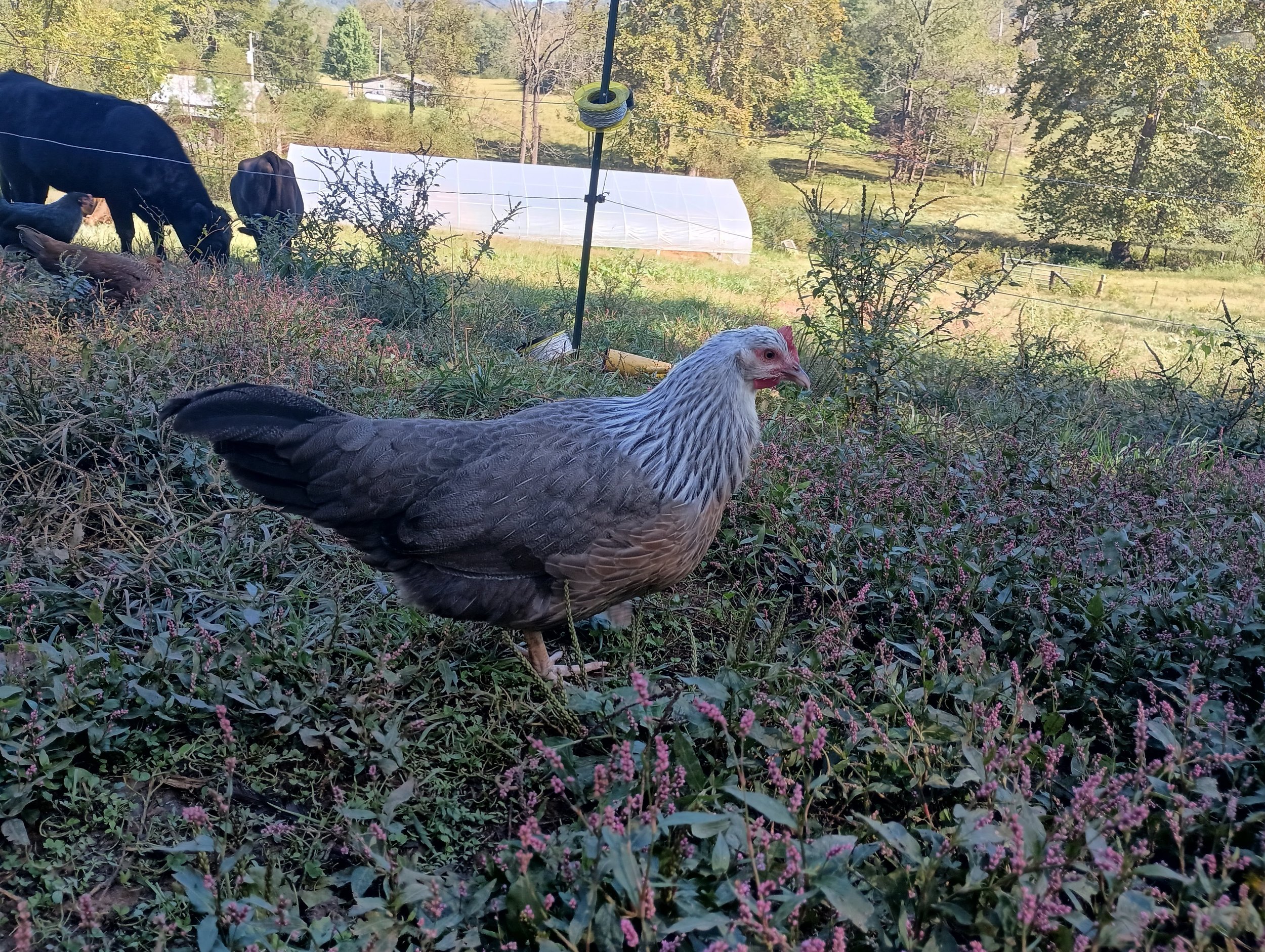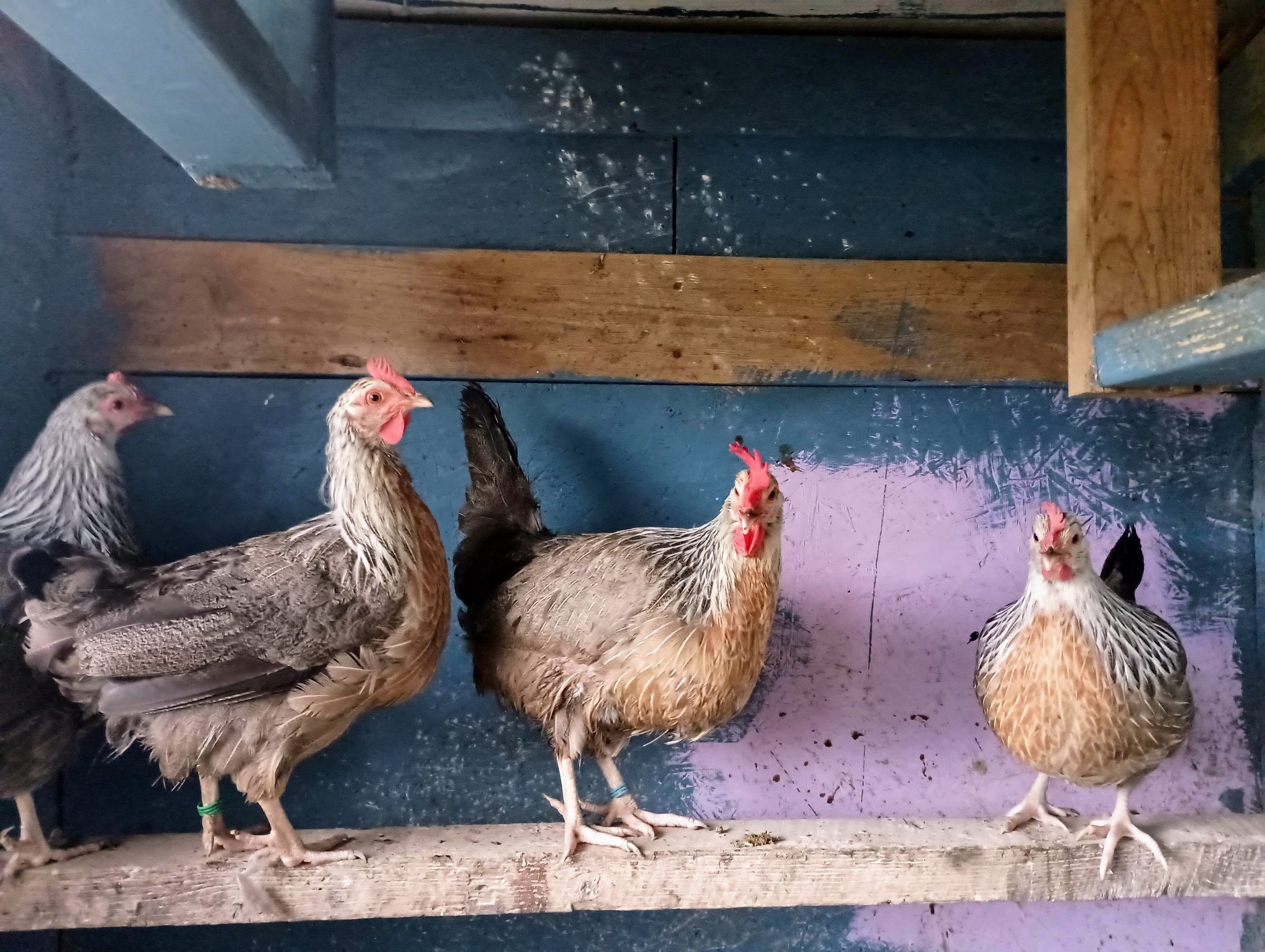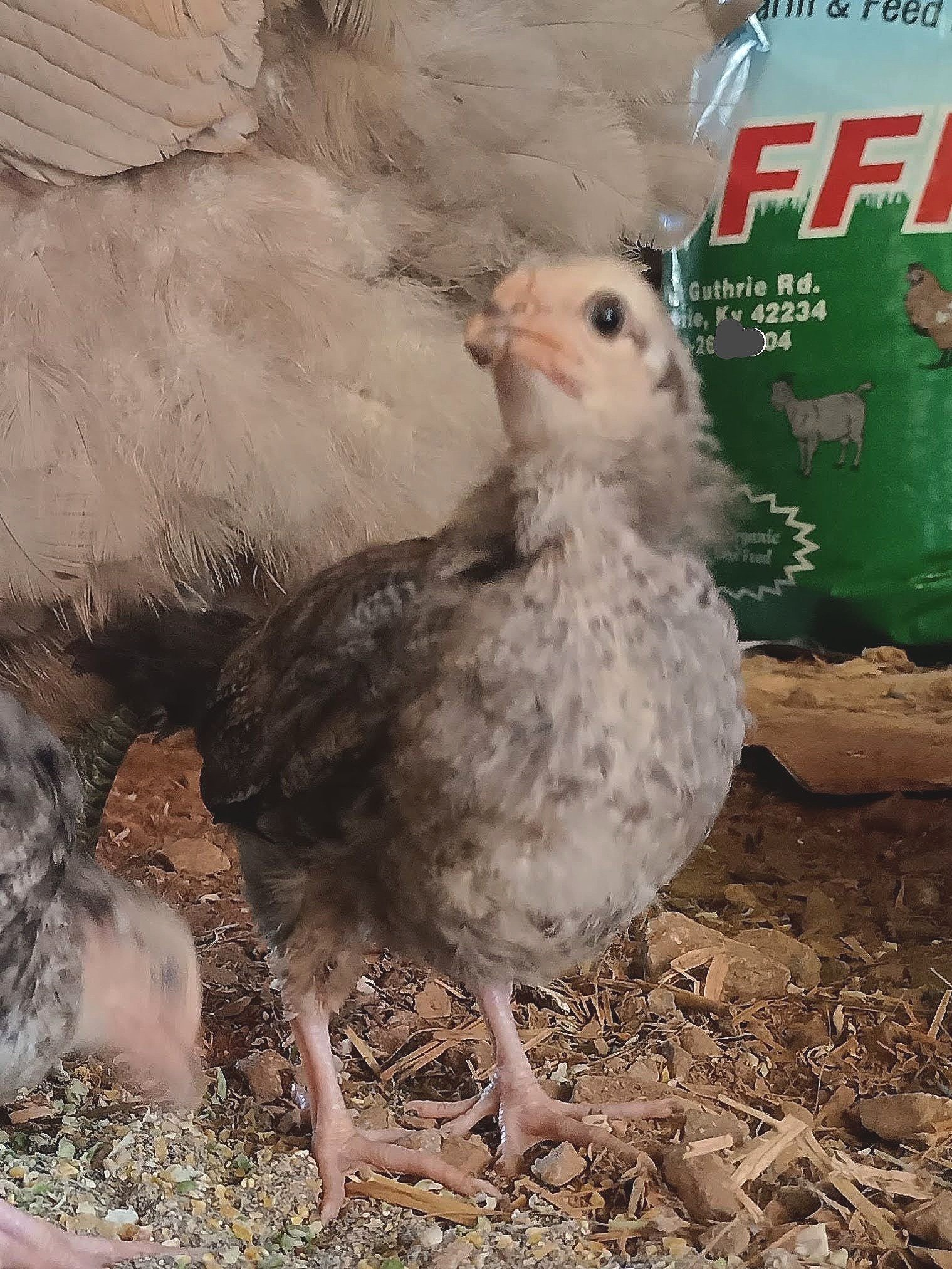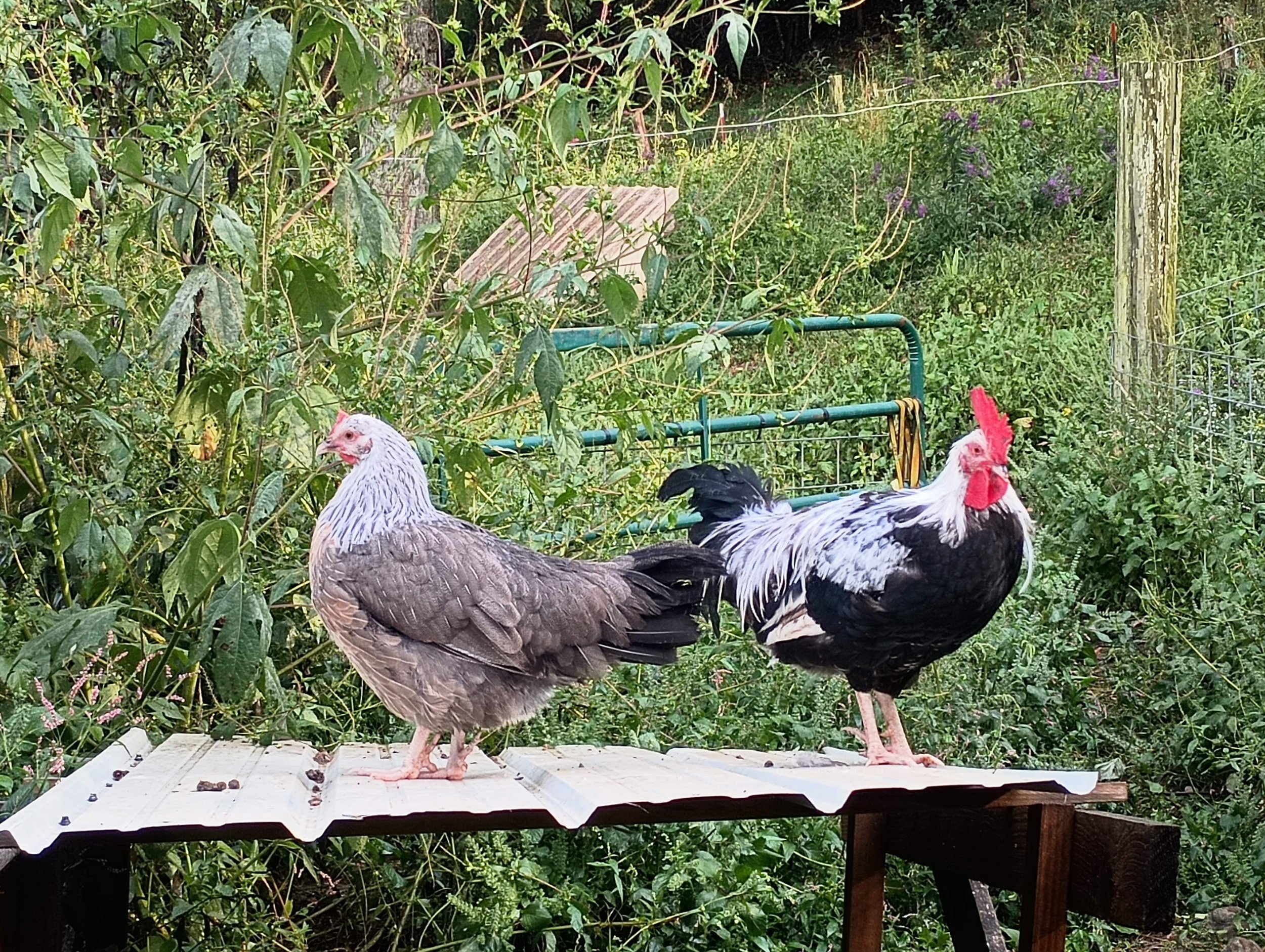
Silver-Grey Dorking Chickens
Dorking Chickens:
An Ancient Breed.
Dual Purpose.
Wonderful flavor.
Winter layers.
Hardy.
Resilient.
Good Foragers.
Non-Aggressive.
Said to have been brought to Britain by the Romans in 43 AD, Dorking chickens are a truly heritage breed. Easily identifiable by their low, squat shape and 5 toes, Dorkings are a delightful addition to the flock. Sexing is possible by five weeks of age, with silver-grey cockerels displaying a striking white on black, while hens turn a beautiful muted, lacy grey with a salmon breast.
Dorkings make excellent foragers and tend to be predator-savvy, displaying an independent streak that can lead you on an egg treasure hunt in the brush when free-ranged. While not flighty, they are generally not interested in being lap birds. Roosters are not aggressive, and Dorkings tend to be submissive to other breeds. Hens are consistent, year-round layers of medium to large sized white eggs. They are said to go broody, but that has not been our experience.
In times past, Dorkings were prized as table poultry, and marketing rights were limited to those who sold at the Dorking market. In our opinion, their flavor is superior to both meat birds and other dual purpose breeds that we’ve raised, which is one of the reasons we have chosen to focus on this breed. Dorkings are a little slower to mature, beginning to lay or ready for the butcher at around 26 weeks of age. Because of their slower growth rate, they have a more forgiving time span for butchering, staying tender for longer than other breeds.
These are a very rare breed, difficult to source as they are only sold in limited quantities through Murray McMurray Hatchery, Sandhill Preservation Center, and unadvertised private breeders. Chicks do not tolerate shipping well, making the acquisition of Dorking chickens a challenge. We are proud to do our part to preserve this endangered ancient heritage breed.
To learn more about Dorking chickens, click here.
About Our Chickens
Breeding Stock
Our Dorking chickens were originally sourced through Murray McMurray in 2023, with only 3 pullets surviving the shipping process. We ordered more in 2024, but shipping losses were high again, and out of the handful that survived, we lost all but one to hawk. Using broody hens, we were able hatch out dozens of chicks from our original stock, but again lost most to a persistent family of hawks that would swoop in right over our and our dogs’ heads. The purchase of an “air dancer” to guard our flock seems to have solved the hawk problem, but the hens are done being broody for the year. We currently have two roosters and 10 hens, with 8 more pullets that will hopefully make it to adulthood. If the Sandhill Preservation Center has Silver-Grey Dorkings in stock for 2025, it is our hope that their chicks will better tolerate shipping so that we are able to increase our genetic diversity.
Diet
Our chickens are currently 100% free-ranged, but we plan to move them to a very large, completely enclosed run in early 2025 to better manage predators and the Dorking propensity to hide their eggs, as well as ensure no cross-breeding with our non-Dorking roosters. We will continue to free range in the afternoon when possible. As with all our animals, we focus on a biologically appropriate diet for our chickens, supplementing with fermented organic grain, mealworms, clabbered milk, and more. We use Tucker Milling NatureCrest layer pellet in their free choice feeders, which is GMO, corn, and soy free. Chickens have free choice access to kelp, humates, and garlic, but tend to ignore these supplements. They do love their calcium supplements, though!
Selection
So far, our main criteria for selection is vigor, aka simply having survived shipping. The hens who have made it this far have earned the right be part of our breeding program. Thanks to the hawks, we have also selected for better predator awareness. With our roosters, we have selected those who have the most striking white on black coloring. Since they have rather large single combs, which could be affected by frostbite in winter, we also selected for smaller combs. In the future, when our flock is well-established, I expect that we’ll select for heavier birds.
Next Availabilty:
Spring 2025
Check back in early spring for hatching eggs.
Chicks or pullets may also be available for in-person pick up.
